Orthodontic Treatment Before the Year 2000
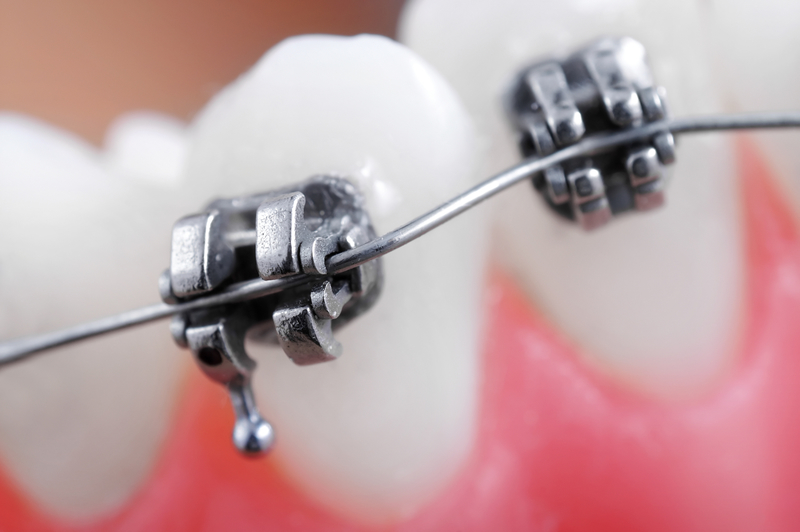
It’s the year 2018 and a lot has changed in every field of medicine since the year 2000. Orthodontics is no exception, and there are always new advances in how your teeth are straightened and cared for. There are many braces options available to patients that were not available in years past. However, some services—such as Invisalign—have been around longer than you might think. Find out when different orthodontic practices and services were available to patients and how orthodontic treatment looked before the year 2000.
How Old Is Orthodontic Treatment?
Many people think that orthodontic treatment is fairly new. However, people have been straightening their teeth for many centuries. Their methods were simply much cruder than the braces and orthodontic appliances you know today. Many mummies from Ancient Egypt have been found wearing orthodontic appliances to straighten their teeth. Ancient Greeks, Romans and the Etruscans have also been found with various types of “braces” and other mouth appliances.
To give you an idea of how long orthodontic treatment has been around, writings by Hippocrates (a Greek physician) have been found about the subject from 400 b.c. Even back then people were concerned about crooked teeth and how they looked. However, there weren’t very good methods for straightening the teeth, so there weren’t many advances in orthodontics until just a few centuries and decades ago.

Past Orthodontic Methods
People centuries ago did not have the best methods for straightening teeth. However, over the centuries, many people made advances or tried various methods such as the following:
- Ancient Egyptians used metal parts and wires to try to straighten the teeth, as has been seen on mummies.
- Celsus, a Roman writer from around 1 A.D., wrote about trying to straighten your teeth by pushing them into place.
- Several years later, a Roman named Pliny recommended filing your teeth down if you wanted them a certain size.
- Pierre Fauchard was born in 1728, and through his various methods and research in straightening teeth, is now considered the “Father of Dentistry”. One of the methods he tried on patients was forcefully pulling and moving the teeth into place with forceps. He would then tie those moved teeth to others so they could heal back into the mouth again.
- Dental impressions began in the 17th century by Matthaeus Gottfried Purmann. Impressions make models of the teeth, and this method was so successful that impressions are still used today.
- In the United States, barbers and medical doctors often pulled infected teeth and performed orthodontic treatment. The treatment varied from person to person and generally involved pulling teeth without numbing medicine.
- J.S. Gunnell invented a form of headgear in 1822 that was successful in straightening the teeth. However, that headgear was large and fastened to the jaw outside the mouth and pushed on the teeth.
- Before 1970, professionals in orthodontics wrapped wires around each tooth, anchoring them with a bracket on each tooth. This method required a lot of metal in the mouth.

Modern Braces and Appliances
Modern orthodontic treatment is very straightforward and easy. Orthodontics has advanced so much that people can even straighten their teeth without any visible signs that they are doing so. When you think of braces, you probably think of the metal brackets and wires that so many wear. Traditional metal braces consist of a metal bracket attached to each tooth with a metal wire going through the bracket. This orthodontic treatment method mimics past metal treatments that were done throughout the centuries. However, the brackets and wires take up minimal space in the mouth and gently straighten the teeth.
Ceramic braces are another modern option for patients that are most similar to metal braces. They involve the same look and design, except they are made from white, ceramic material. Even the archwire can be made white for a patient. Lingual braces also use a metal bracket and wire design, except that they are attached to the back of a patient’s teeth. These were created in 1976 and provided patients with a way to straighten their teeth without visible brackets on their teeth.
Invisalign is the most incognito way to straighten your teeth. Created in 1997, this orthodontic treatment consists of transparent aligners that are switched out each week. A patient will wear the aligners 20-22 hours a day with the freedom to remove them for eating, drinking, sports, playing instruments and more. In about the same time as traditional metal braces (sometimes less), patients can get straight teeth. This is an amazing option, as any teen or adult can straighten their teeth without others knowing.
Orthodontic Treatment Today
Many advances in dentistry happened around 1970 and later. This is when the design of metal braces was perfected to what we know it to be now. The future will surely hold many more advances in orthodontic treatment as the years go by. No matter what type of appliance is available or what you choose to have, we recommend straightening your teeth. Not only can it significantly reduce your risk for tooth decay and gum disease, but straighter teeth can raise your confidence and help you be more successful. To have your free braces consultation, call Belmar Orthodontics today at (303) 225-9016!
How We Plan Out Your Orthodontic Treatment

Even though most patients have braces for about 18-24 months, every patient’s care is different. Orthodontic treatment for one patient may be extensive, while another patient will have a very short and simple experience with braces. Find out how Dr. Hardy plans out your orthodontic treatment and how that treatment will look with different braces appliances.
Do You Need Braces?
Countless millions of people will require orthodontic treatment in order to fix bite and alignment problems. They also get braces to fix crooked teeth and to reduce problems with tooth decay and gum disease. Over 4 million Americans a year receive orthodontic treatment via braces. Many of those people are teens, but about 1/4th are children and about 1/4th are adults. Studies show that many people see braces as a luxury and even go without many needs and wants in order to have them. This is not only for aesthetic appeal, but also for health reasons.
Countless studies prove that orthodontic treatment can help make a person more confident. When your smile is beautiful, you will smile more. Smiling will help you feel happier and more confident, and you will actually start to appear that way to others. Studies also show that people with straighter smiles as viewed as healthier, wealthier, more attractive, and more trustworthy. If all of those qualities appeal to you, consider receiving orthodontic treatment. If you have oral health problems as well, you may actually need braces to help those problems stop.
Orthodontic Treatment for Children
We perform child orthodontics for many patients. Development in children is vitally important in the younger years before age 10. Children lose their baby teeth around ages 7 and 8. They immediately start to have their permanent, adult teeth come into the mouth. This is a time when we can examine a child’s bite and alignment to make sure the adult teeth will come in correctly.
Some children don’t have enough room in their mouth to have their adult teeth grow in or they grow in crooked. This can lead to significant problems with speech impediments. If the teeth are crooked, this can place uneven pressure all over the mouth, leading to broken, cracked and chipped permanent teeth. Crooked teeth also lead to pockets of plaque that toothbrushes and floss can’t get to. This leads to decay problems. Straightening the teeth with orthodontic treatment can not only fix bite and alignment issues, but can straighten the teeth in childhood, so they come in correctly as a child grows.
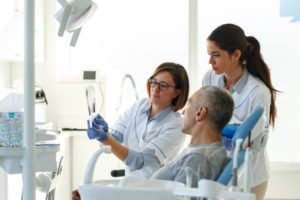
Orthodontic Treatment for Teens and Adults
For children, we take x-rays of their teeth to detect bite and alignment issues. We show our patients problem areas in their x-rays and suggest orthodontic appliances to best realign the bite and alignment of the jaws. For children, teens and adults, the teeth will be straightened to avoid serious dental problems. We offer 3 types of either metal or ceramic options to patients for their orthodontic treatment including metal braces, lingual braces and ceramic braces. All consist of a bracket-and-wire design, but all are different.
Depending on your preferences, you can choose to have either metal or ceramic brackets and wires on your upper and lower teeth. Or, you can choose to have metal lingual braces, which are metal braces placed on the backs of your teeth. Once you choose your orthodontic appliance, we take impression molds of your teeth. Those molds will harden and we will use them to plan out a trajectory of your orthodontic care. Based off of how crooked the teeth are and what appliance you choose, we will break down your orthodontic treatment into a series of months and will see you every 4-6 weeks to tighten wires on your teeth in order to move the teeth during that timeline. When you get your braces, you will also get all the information you need about your chosen braces appliance and what timeline you can expect for your straightening.
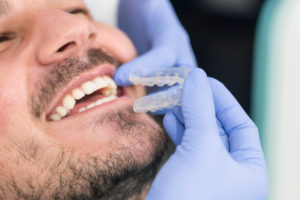
Invisalign Treatment
In decades past, traditional metal braces were the only option given to patients. In modern times, many teens and adults are opting for more and more discreet straightening options. The most invisible method for receiving orthodontic treatment is through Invisalign transparent aligners.
Invisalign is a fairly modern orthodontic treatment where the teeth are straightened with transparent aligners instead of the traditional metal wires and brackets. Invisalign teen and Invisalign for adults are both comprised of custom-made aligners that a patient changes every week. We digitally design Invisalign aligners based off of digital impressions of a patient’s teeth. Using this initial impression, we can digitally map out a patient’s orthodontic treatment. This is beneficial to teens and adults alike. They can visually see how their teeth will change over the months and how the end result will be. Plus, no goopy putty required!
The hard Invisalign aligners efficiently place pressure on the teeth and slowly move them into place over time. Instead of tightening brackets and wires at orthodontic appointments, patients receive new aligners and have their teeth examined to see if they are on course with their treatment. This treatment option lasts about as long as traditional metal braces, but can be shorter for many patients.
Choosing Orthodontics That Are Right for You
If you are considering getting orthodontic treatment, don’t wait! A straighter smile has incredible benefits for children, teens and adults alike. Straighter smiles bring more confidence to people, and others will see that confidence. To learn about what orthodontic treatment option is right for you and to get started on your customized plan, call Belmar Orthodontics today at (303) 225-9016!
Choosing a Good Orthodontist
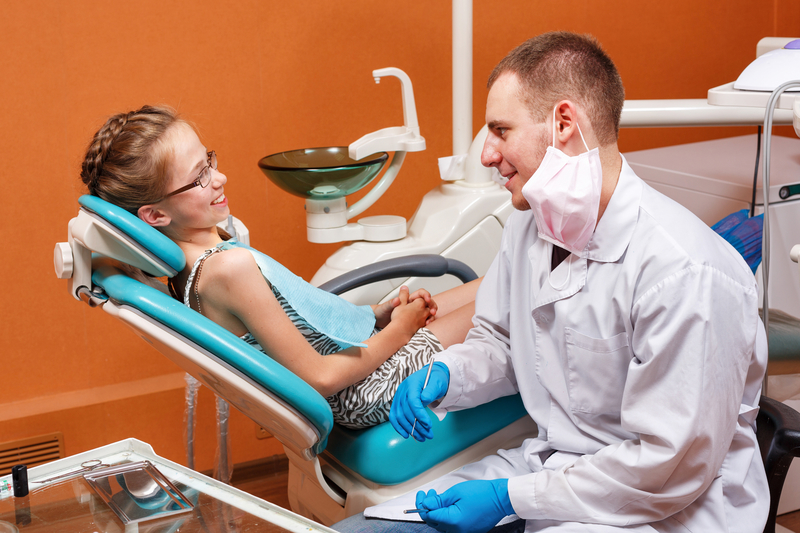
There are many orthodontists out there, but not all are created equal, and not all have the same training or experience as others. Just like dentists, only some are award-winning orthodontists (for good reason), while others are not. A good orthodontist needs to have specific training and credentials to work on your or your child. Their office needs to have specific equipment to perform the necessary work, and a good orthodontist will provide a wide range of services for their patients. Find out what a good orthodontist looks like and how to choose a good one from one you want to avoid!
Choosing to Receive Braces
If you have made the choice to get braces, we commend you! Braces is an amazing way to change your life for the better. Studies show that straightening your smile is directly related to increased confidence. The better a person’s smile looks, the more they smile and the more confident they appear to others as well. Studies by Invisalign and countless others have found that a straighter, more beautiful smile makes you appear happier, healthier, wealthier, and more attractive to others. 73% of people are also more likely to find you trustworthy.
Now that you have chosen to embark on this new journey of getting braces, you have to decide who you should get your orthodontic care from. All too often, dental practices have started offering orthodontics via transparent aligner systems or Invisalign. Even though we offer Invisalign at our center (and it is effective), the majority of dentists are not trained to perform orthodontics. It’s similar to a spa offering botox injections instead of a medical doctor that provides botox injections. They may have some training in oral health and dentistry, but dentistry is not the same as orthodontics.
You always want to choose a trained orthodontist to provide you orthodontic work, and not just a dentist (or even someone without a degree) to perform any work on your mouth. If you do, you take a serious health risk that your teeth will be messed up permanently or that you will have oral health complications. Always go to a certified and trained orthodontist for your orthodontic work.
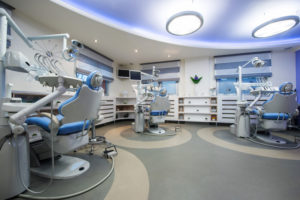
Training to Become a Good Orthodontist
Becoming a good orthodontist takes many hard years. A good orthodontist will receive an undergraduate degree and then will go on to be accepted into dental school. A good orthodontist will receive high marks in their dental school, and will have to be accepted into an orthodontic school afterwards. Some even go beyond their 10 years of base training to do fellowships and additional study. It takes an entire decade to learn how to straighten the teeth properly, even if orthodontic care may seem simple and straightforward.
Orthodontists deal with the health of a person’s mouth, which can affect their overall health, their confidence, and even if they are at risk for tooth decay, gum disease and more. Working with children in orthodontics can be even trickier, as many children require specific work to make space in the jaws for incoming teeth.
What Is Their Experience with Children?
The majority of good orthodontists work with children on a regular basis. However, there are some that have better training than others. You always want to look for a good orthodontist that has training to work with a child on their intellectual level. Children sometimes fear dental or orthodontic office or having work done on their mouth. We strive to provide a child-friendly atmosphere to our young patients to make them comfortable during their treatment.
A good orthodontist is one that can help your child feel at ease and confident about the smile they are getting. When choosing an orthodontist, observe how they act with your child. If they are warm and inviting, this can help children have a positive orthodontic experience for early orthodontic treatment and when they receive braces for straightening later on.
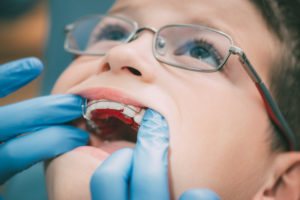
What Qualities Do We Have?
If you want a good orthodontist, give Belmar Orthodontics a try! Dr. Hardy is an award-winning orthodontist that treats patients at two different locations. He has extensive training in dentistry and orthodontics and actually runs a pediatric dentistry and orthodontics office alongside his wife. He treats pediatric patients and older at Hardy Pediatric Dentistry & Orthodontics and he treats patients of all ages at Belmar Orthodontics. Dr. Hardy offers every option available in orthodontics to his patients. That includes traditional metal braces, lingual braces, ceramic braces, Invisalign and Invisalign Teen, as well as retainer devices, TADs, and surgical orthodontics. All of these services required countless hours of training, testing and performance to become certified.
As we mentioned, you want an orthodontist who has won awards and who others are talking about. Dr. Hardy is board-certified by the American Board of Orthodontics. He is also an active member of the American Dental Association and the American Association of Orthodontics. He received the Everett Shapiro Award in Orthodontics as well as the Dr. Harold Berk Endowed prize Fund for Excellence in Research. He is also a member of many dental organizations that you can find here. He is extensively trained to work not only with teens and adults, but also children—even very young ones. Dr. Hardy also works alongside his wife often, who also has extensive training and psychology experience with young children.
We can talk about Dr. Hardy’s qualifications all day long, but the best way to know what a good orthodontist looks like is to come into the office and see for yourself. To schedule your free consultation or to learn more, call Belmar Orthodontics Orthodontist in Lakewood Colorado today at (303) 225-9016!
A Straight Smile for Life with Retainers
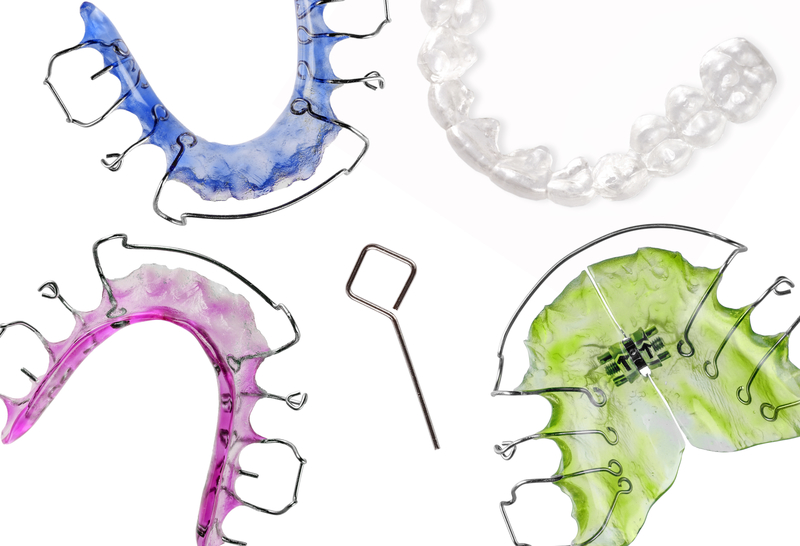
Most patients spend 18-24 months with their orthodontic appliances. That’s about 78-104 weeks of your life with braces, and time that you don’t want to have wasted. The worst thing that can happen after getting your braces off is that your teeth go crooked once more. This can happen within the first month if you’re not careful. Luckily, dentists know this and we provide our patients with either removable retainers or permanent ones. See why retainers are so important for maintaining a straight smile for life and why you need one!
Finishing Up with Braces
If you have gotten to the point in your orthodontic treatment that you need a retainer, congratulations! It has taken you 18-24 months to get that beautiful, straight smile you’ve wanted. No matter if you had lingual, ceramic, or metal braces, or if you opted for Invisalign treatment, you will still need an orthodontic appliance to keep your teeth straight. This isn’t something you want to wait on either, as studies show that your teeth start shifting back to their crooked state within the first month of getting braces off.
When our patients end their time with braces, we immediately prep them for either a removable or a permanent retainer. There are pros and cons to each of these types of retainers, but the bottom line is, you need one! A retainer is exactly what it sounds like; it “retains” your straight smile. When you wear it (usually at night), your smile won’t shift or become crooked. We take an impression of your teeth as soon as your braces come off, which we then send to our lab. You will have a retainer custom-made to fit your newly-straightened teeth that will keep them in that position for decades to come.

Retainers 101
You may need both a bottom retainer and a top one, or you might just need one. Some dentists only require a bottom retainer, as the bottom teeth tend to keep the top teeth in place. It all depends on the patient. As we mentioned, there are two types of retainers: removable and permanent.
- Removable – These are the classic retainer pieces that most people think of when they think “retainer”. When we make impressions of your teeth, we go back and use those impressions to make retainer pieces for your top and bottom jaw. Once they are done, you will come into the office and try out your new retainers. Wear them every day during the night and clean them when you take them out in the morning. Only use cleaning products that are safe for mouth retainers and never use hot water when cleaning.
- Permanent – This is also a “fixed” retainer because it is bonded to your teeth and set in place. Much like your braces (if you chose ceramic, lingual or traditional metal), we will bond metal parts to your teeth. However, these metal parts will be placed on the back of your teeth instead of the front. You can choose to have a metal bar that goes across the back teeth or you can choose small metal wires that will bond each individual tooth to the one next to it. If you choose the second, you will have the bottom 6 teeth connected, with bonding cement on each of the backs of those 6 teeth. However, the metal and bonding is small, so it won’t take up very much room in your mouth. You may not even notice it! Both the bar and series of small wires work to keep your bottom teeth in place, which will keep your top in place.
Which One Is Right for You?
Our patients can choose if they want to have a removable or permanent retainer. One might not be right for a patient depending on age and daily habits. If you often lose things (such as car keys or your phone), then you might want to choose a permanent retainer. These stay in place 100% of the time and because of that, you can never lose them. Plus, they retain your teeth around the clock, instead of only at night (like a removable retainer). Permanent retainers also aren’t visible like removable retainers are because they are attached behind your teeth.
A removable retainer will have visible bars that others will be able to see in your mouth when you show your teeth. This generally isn’t a problem, as most people wear theirs at night. If you already struggle with brushing and flossing your teeth, you might opt for a removable retainer, as flossing can be more difficult with a permanent retainer. However, both options are great for all our patients. You simply have to choose which one fits you best.

Healthy Life, Healthy Mouth
We would love every single one of our patients to have a straight smile many decades from now. If you wear your retainer like you should, or continually renew your permanent ones, you can count on keeping that straight smile. However, you also want to keep your smile healthy and free of disease throughout all those decades. After all, there is no point in striving for a straight smile if you don’t have any teeth!
No matter if you are 9 or 90, you have to keep up on proper oral hygiene practices if you want to have a healthy, beautiful smile. Brush and floss your teeth every single day, making sure to brush multiple times a day. Eat nutritious foods and cut down on the sugar to reduce your risk for tooth decay and gum disease. Also, clean your retainer every day so that it stays strong and durable for many years. If you need a new retainer, or are interested in a permanent retainer option, call Belmar Orthodontics today at (303) 225-9016!
Your Braces from Start to Finish
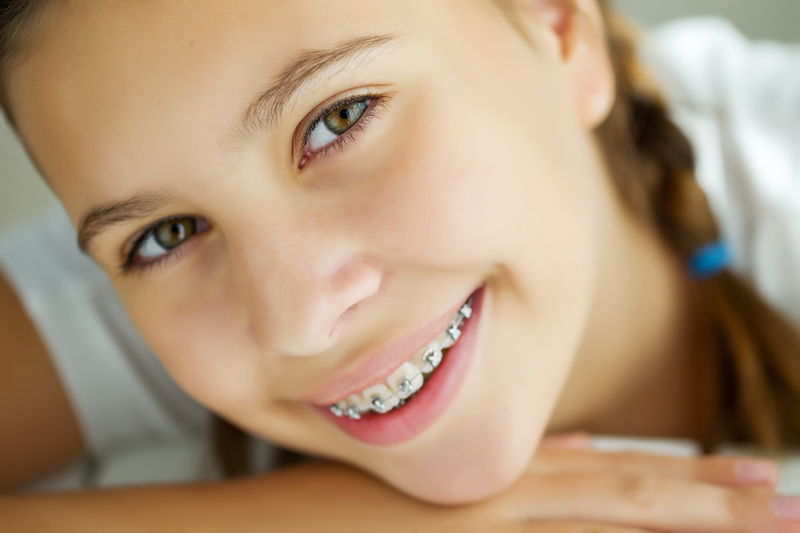
There are many things to think about when deciding to receive your braces. What type of braces should you choose? What age should you receive those braces? Then, after deciding what method of teeth straightening you want, you then have to learn how to properly care for your teeth. You will also have to get used to sometimes having sore teeth after your appointments and fitting in seeing the dentist. We can help you to know about your braces appliance from choosing a braces type, cleaning them, and avoiding tooth decay while you get a straighter smile.
Choosing Your Braces Style
Receiving braces is an exciting time for many people. It is the start of a better smile and a better you. But before you can get that straighter, more beautiful smile, you have to choose what style of braces you want. We offer:
- Traditional Metal Braces – These are the classic metal bracket and wire option that is most commonly chosen by patients. Patients who chose this option come in to have their wires tightened at each appointment.
- Ceramic Braces – These braces are a close cousin to metal braces. They have the same bracket and wire design of metal braces, except that they are made out of ceramic material. This helps decrease demineralization during your orthodontic treatment. Ceramic material is also naturally white, helping these braces to blend in with your teeth more than metal would.
- Lingual Braces – These are metal braces that are placed on the back of your teeth. Instead of just a square bracket, the metal must be custom-made to the shape of the back of your teeth. This is a discrete option that adults and teens love.
- Invisalign Treatment – This is the most invisible option available to our patients. Invisalign is a series of transparent aligners that you wear at night and throughout the day. You can remove them for eating, playing sports, cleaning your teeth and more.
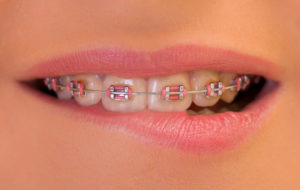
Getting Your Braces Put On
After you’ve chosen the style of braces you want, you need to have them fitted to your mouth. 3 out of the 4 options available to you will be bonded to your actual teeth. At our office, we make sure your teeth are thoroughly cleaned and dried before we bond brackets to them. With metal braces, we will use a cement bonding glue to adhere a metal bracket to the center of each of your teeth. Your back molars might receive a band that goes all the way around the tooth.
Once the metal bracket is cemented to the center of each tooth, we will pass a small metal archwire through each bracket both on top and on bottom. In the end, you will end up with a wire across the teeth on your upper jaw and across the teeth on your lower jaw. The glue we use may taste a bit unpleasant, but it is otherwise harmless. The entire process of getting your brackets and wires placed on your teeth will be between 1 and 2 hours.
The Process for Other Options
Depending on what option you have chosen, your braces process might be a bit different. Ceramic braces are applied the same way that metal braces would be, as they too consist of brackets and wires. However, if you choose to get lingual braces, we can’t simply place brackets on the backs of your teeth. Once Dr. Hardy has determined that you are an ideal candidate for lingual braces, he will take impressions of your teeth. He then sends them to a lab so that your brackets and wires can be custom made. The braces will then be bonded behind your teeth at a separate appointment.
For Invisalign treatment, we design a series of transparent aligners that you will switch out each week. We can take digital impressions of your mouth that we will use to design your aligners. We use a digital scanning system that sends images to a state-of-the-art printing machine. Then, each week you will have new aligners that you will simply replace. It’s that easy!
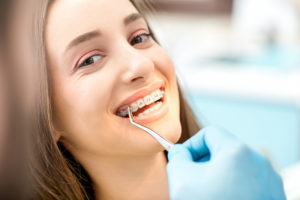
Your Orthodontic Experience
Most patients will have braces for 18-24 months. Some people don’t like braces, but the majority of people do. You can choose the style of your braces and if you want them to be hidden or noticeable. You can also dress up your braces with colorful bands if you so desire. Braces require more care than what you are used to. You must take more time with brushing and flossing, even using tools such as a waterpik, proxabrush and floss threaders to fully remove food from your braces. You must clean your teeth thoroughly to avoid tooth decay during your time with braces. We can show you how to do all of this at our office.
Each patient will come in every 4-6 weeks for orthodontic checkups. This is where we will examine your braces and how your teeth are moving. You will experience initial soreness and discomfort after you first get your braces. You might have this discomfort every time your braces get tightened as well. A simple over-the-counter pain reliever should help you as well as eating soft foods. Having braces changes life a little bit when it comes to cleaning your teeth (which takes longer), but the benefits far outweigh everything else. At the end of your treatment, you will have an amazing, beautiful smile that is sure to wow everyone around you. If you want to know more about your braces options, or want to get started on your journey today, call Belmar Orthodontics today at (303) 225-9016!
Dental Care during Braces
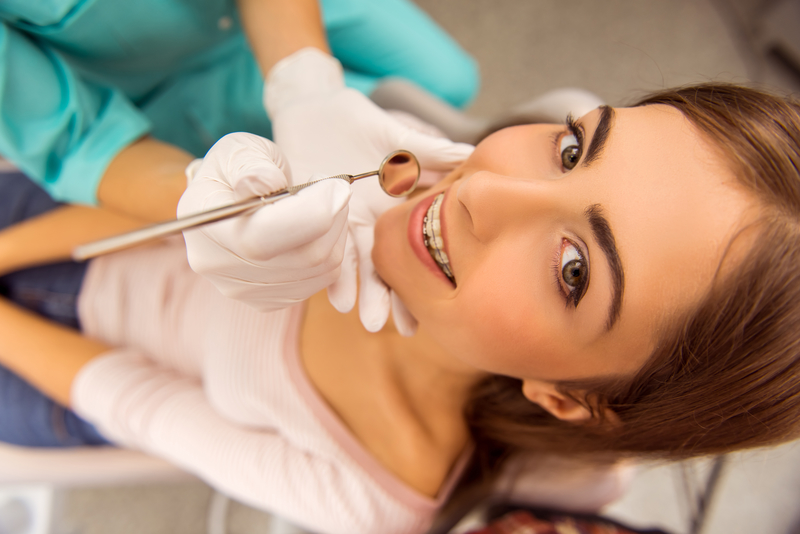
An orthodontist has been to dental school and is skilled enough to spot gum and teeth problems. However, seeing an orthodontist is not enough to keep your teeth healthy. During your time receiving braces, it’s also important to keep seeing a dentist for cleanings, exams and dental treatments. Learn why dental care and oral hygiene is important during your time with braces and how it can help you have a better smile after your braces!
Caring for Metal Braces
Your dental care during braces will depend on the type of braces you receive. If you choose metal braces, brackets and wires in your mouth make it easier for food particles to get stuck. This quickly leads to dental issues if proper care is not taken. You have to be meticulous about cleaning away plaque and stuck food particles so that you avoid tooth decay and demineralization of your tooth enamel. You do this by:
- Brushing after every meal. Your braces easily trap food particles every single time you eat. Brushing after each meal can prevent staining and reduce the potential for bacteria buildup. When brushing, make sure you have a regular, soft-bristle brush. Brush down from the top, then up from the bottom on each tooth that has a bracket.
- Using a threadable floss or floss threader. You will quickly notice that you can’t floss the conventional way with metal braces because the archwire is in the way. If you use a floss threader, thread regular floss through the eye of the threader like you would a sewing needle and thread. Or, using threadable floss, insert the small or pointed end in between your teeth, pulling it through. Once in place between your teeth, you can floss the two teeth on either side of where you have inserted the floss, taking care not to apply force or pressure against the archwire. Repeat between all teeth.
- Using a proxabrush. This is a small brush that looks like a Christmas tree. Place the proxabrush between two brackets, below the archwire, brushing up and down. After several strokes, repeat this motion by inserting the brush from the opposite side (either down from the top or up from the bottom).
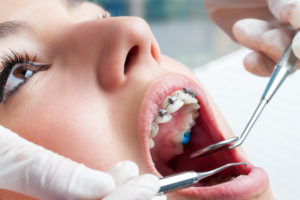
Dental Care with Other Braces
There are other types of braces besides metal braces. At our office, we also offer Invisalign, lingual braces and ceramic braces.
- Ceramic braces – Care for ceramic braces is the same as for traditional metal braces. This is because the design of these braces are the exact same, except they are made out of white, ceramic material.
- Lingual braces – These braces consist of brackets and wires that are placed on the tongue-side of your teeth (meaning behind the teeth). You will have to be more careful with brushing and flossing your teeth, as you won’t be able to see the brackets and wires as well. However, cleaning is very similar to how you would clean metal braces. With flossing, floss threaders will become your best friend, and you’ll want to be meticulous with this because food can get stuck more often with the braces being inside your mouth by your tongue.
- Invisalign – This orthodontic appliance is completely different than the other options you have. Invisalign is a series of transparent aligners that you switch out every week. The benefit of these aligners is that you can easily remove them, and brush and floss your teeth like normal. No brackets, wires or lengthy flossing session. When you take the aligners out, rinse them to get the saliva off of them. Then soak them in a retainer/braces cleaner. An example is Retainer Brite or denture cleaner.
Do You Need to See a Dentist?
Did you know that an orthodontist must complete dental school. In order to practice orthodontics, they need to complete a 4-year bachelor’s degree followed by 4 years of dental school. After that time, an orthodontist will continue 2-3 years of additional training and schooling to practice orthodontics. Therefore, an orthodontist knows what a dentist knows when it comes to your oral health. However, one point that we want to stress is that you need to continue seeing the dentist during your time with braces.
An orthodontist is skilled at treating issues with your oral health, however, an orthodontist is in charge of correcting bite and alignment. A dentist is the one that will need to correct problems with tooth decay and gum disease. Even though an orthodontist has received the same training, their profession is to not to fill cavities or do root canals unless their practice does both. During your time with braces, you must continue receiving dental care from a dentist. Braces raise your risk for tooth decay and gum disease
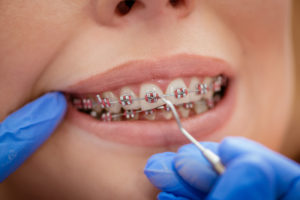
Dental Care during Your Time with Braces
Your dental care during braces will depend on the type of braces you receive. Many patients choose traditional metal braces for straightening their teeth. No matter what orthodontic option you choose, it is particularly important to maintain great dental care through attention to proper oral hygiene. If you don’t know what that proper hygiene routine looks like, we can help you. As always, if you have any questions about braces care or maintenance, please do not hesitate to contact our office. We are here to help you reach your goals and to keep your mouth healthy. For help caring for your braces, or if you are finding certain oral hygiene tasks difficult, call Belmar Orthodontics at (303) 225-9016!
The Best Ages for Having Braces

If you have a desire to get braces, we commend you for choosing to have a better smile! Studies show that a better, straighter smile can increase your confidence, success and professional life. However, there are some key ages that having braces are the best for patients. If you have bite and alignment issues, it’s best to receive child orthodontics. For straightening, the teenage years are the best for wearing having braces. However, braces can benefit patients at any age and may even be needed more than once in life. Find out what orthodontic treatment can do for you at any age!
Child Orthodontics
The American Association of Orthodontics recommends that children have their first orthodontic visit between the ages of 7 and 8. Having and examination early as a child will detect bite and alignment issues that can become severe later on in life. This early visit is something that you definitely want your child to receive, as bite and alignment issues can lead to problems with speech. If the baby teeth are misaligned, then the adult, permanent teeth will come in misaligned as well. This will eventually lead to cracked, chipped or broken teeth when chewing and biting, as different teeth will take on different amounts of pressure.
There are several different types of bite problems children can have. One is crossbite, where one or more teeth are turned either in towards the tongue or out towards the cheek. Overbite is when the upper teeth overlap the lower teeth too much. Underbite is when the lower front teeth overlap the upper front teeth. In a healthy smile, the upper front teeth will rest on top of (and just a tiny bit forward) of the lower front teeth. If your child does have a bite or alignment problem, it’s easiest to fix while they are young, as the jaw is still growing and forming. Between 7 and 8 years old is the best time for having braces as a child to correct this problem.

Adult Orthodontics
Having braces as a teenager can vary depending on when all the permanent teeth come in. Once the permanent teeth have come in (somewhere around age 12), a child should be seen for a consultation. This is great time to straighten the teeth as the jaw is still growing. However, later in the teenage years and afterwards, the jaw will stop growing and straightening the teeth becomes harder. That is why the teenage years are the best to straighten a child’s teeth. Not only will having braces straighten crooked teeth, but they can also help your child have more confidence because they will produce a beautiful, straight smile after treatment. Straighter teeth are proven to boost confidence in children, teens and adults alike.
Adults benefit from receiving braces at any age. Even though the jaw has stopped forming, it’s never too late to get braces (except if you are in later years and losing your teeth). About 25% of people who have braces are adults. Getting a straighter teeth can boost your confidence and social life. Studies show that employers also hire someone with straight teeth over someone with crooked teeth. Other studies show that people find you more attractive, trustworthy, and datable if you have straight teeth.
Braces Options
Your options for braces will vary slightly depending on your age. In the past, traditional metal braces were your only option for straightening your teeth. This option is the one that has metal brackets attached to the center part of your teeth with a metal wire that goes through them on top and bottom. Metal braces aren’t your only option for treatment. For children, metal and ceramic braces are the best choices and the most economical. Ceramic braces mimic metal braces and have brackets and wires. However, instead of metal, these appliances are made from ceramic material, which matches the natural whiteness of your teeth. This is why they are sometimes known as “clear braces”.
For a more discreet look, lingual braces are also an option for adults. These are metal braces worn on the back of the teeth and custom-fitted to each tooth. However, the most discreet option for having braces is Invisalign. This is a series of transparent aligners that we custom-make for your mouth. You switch out the aligners every week and watch as your smile transforms. The best part about this option is that you can remove the aligners for eating, drinking, brushing your teeth, sports and more.

A Beautiful Smile at Any Age
No matter what option you choose, we know you will love the smile you’ll receive by having braces. Braces are not solely for children or teenagers, but also for adults. It doesn’t matter if you are 7 or 57; braces are great for patients at any age! Having braces will significantly reduce your risk for tooth decay and gum disease as well as broken, cracked or chipped teeth. They can get you ahead in life by helping you feel and appear more confident and successful. To answer the question about the best ages for braces, we say the best time is now! To learn more about what to expect with braces, call Belmar Orthodontics today at (303) 225-9016!
5 Advantages of Invisalign Treatment
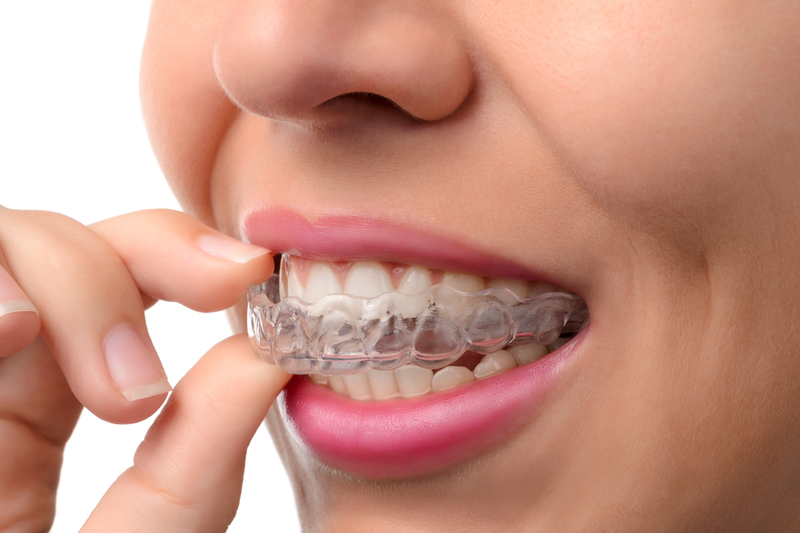
Are you thinking about straightening your teeth? A straighter smile through Invisalign treatment or other orthodontic options will set you on a path to more confidence and success. Lakewood Invisalign treatment not only works to improve your smile, but it also comes with amazing advantages over traditional braces. Not only is invisalign treatment virtually invisible on your teeth, but the aligners are easy to remove and work well with your lifestyle. Read on for more advantages of Invisalign treatment!
Invisalign and Invisalign Teen
You may have heard of Invisalign treatment before. This type of orthodontic treatment has been around for about 20 years, but has continually gained popularity—especially among adults and teenagers. We offer an alternative to traditional metal braces that can discreetly straighten your teeth while improving the functionality of your smile. Invisalign does all this without anyone knowing that you are even straightening your teeth!
Invisalign is a series of transparent aligners that gently move your teeth into a straighter position. You meet with us for an Invisalign consultation and we are able to take digital images of your teeth. With these, we make a model of your mouth and plan out a trajectory of your straightening treatment. Based off of your mouth, we design transparent aligners that will be switched out every 1-2 weeks. You wear these aligners throughout the day and night to move your teeth into that beautiful straight smile you’ve always wanted. They can even correct bite and malocclusion problems.
Advantages of Invisalign
There are many advantages to Invisalign treatment, which is why our patients love this option!
- It’s designed to be virtually unnoticeable on your teeth. The aligners are clear and fit snug to your teeth, meaning no one will know you’re wearing them.
- The aligners can easily be removed during eating, drinking, flossing and brushing. You can’t do that with any other braces option, as all the other options are cemented to your teeth. Being able to remove the aligners makes it so you have freedom with your treatment, especially if you need to remove the appliance to play sports.
- Less office visits are typically needed compared to traditional braces. You only need to come into the office every 4-6 weeks at a time.
- Teeth are easier to clean for optimum oral health during treatment. You simply remove the aligners at night, clean them, and clean your teeth as you normally would. Flossing is quick and easy, as are brushing your teeth. Traditional braces take much longer to clean.
- Total time for optimal results is usually shorter than metal braces treatment. If you need only slight orthodontic correction, you won’t need Invisalign treatment for very long.
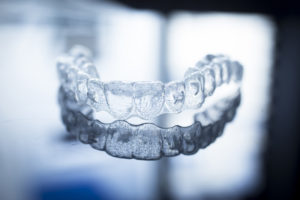
How Do the Other Options Compare?
There are various types of orthodontic options out there besides Invisalign treatment. Traditional metal braces are the most common orthodontic appliances because they are the cheapest option for straightening your teeth. These appliances involve very visible metal brackets attached to the center of each tooth with a metal archwire that passes through the brackets on top and bottom. Lingual braces are also metal braces, but they are attached to the back of your teeth. Clear braces are a very close cousin to metal braces, as they are built the same, but out of ceramic material that is white like your teeth. All options will straighten your teeth very well, but Invisalign is the most invisible option you can have. This is why adults and teens alike love Invisalign treatment so much.
You can use Invisalign treatment for simple straightening cases or complex bite and malocclusion cases. It’s invisible and you can see how your teeth move at every stage of your treatment. You can’t do that as clearly with other types of braces, but must wait until the end of treatment to see your smile. Studies also suggest that teens who do Invisalign treatment (as compared to other orthodontic methods) are 2 times more likely to have a boost in their self esteem. Who wouldn’t want that?
Your Experience with Clear Aligners
We believe that smiles are meant to be shared. However, many people with braces shy away from smiling because of the metal in their mouth. This is common with traditional metal braces, especially with adults. However, a straighter smile can do wonders for your professional and social life. Studies show that a straighter, more beautiful smile can make you more attractive to others. An amazing smile not only boosts your confidence, but can make you more successful because you feel more confident. You’ll smile more, drawing others to you and you will even be happier.
Invisalign has conducted their own research about straighter smiles and what they do for you. After orthodontic treatment, a person with a straighter smile has a leg up on their competition when it comes to landing a job. Employers are more likely to employ someone with a straighter, healthier smile because it makes them appear healthier and successful. People perceive people with straighter teeth as 58% more likely to be wealthy, 45% more successful, 47% more likely to be healthy and 38% smarter. 73% of people are also more likely to trust someone with straight teeth over someone who has crooked teeth.
Your Invisalign Treatment
If you want a straighter smile, don’t wait to get it! With the clear, removable aligners that Invisalign uses, Dr. Hardy can help you gradually move your teeth into their proper position. He can also correct malocclusion (bites that don’t close correctly), without the discomfort and presence of metal braces. When you select Invisalign to correct your smile, no one else has to know! To learn more about this braces option, call Belmar Orthodontics today at (303) 225-9016!
Orthodontic Treatment and Pain Management

One of the most common questions orthodontists receive is “will it hurt?” The answer to this question varies between patients because every mouth is different, and everyone has different perceptions of pain or discomfort. Yes, braces make the teeth and tissues sore. The good news is that orthodontic patients respond well to simple pain management strategies. The discomfort associated with orthodontics is also not felt throughout the duration of treatment. Temporary discomfort occurs when braces are tightened, or when teeth undergo an increase in pressure to shift them into a new position. Learn more about pain management when you have occasional braces discomfort and how to make your experience more comfortable.
Receiving Braces
As you become accustomed to your new braces, your teeth will likely be tender and you may experience a dull ache for the first 2-4 days. Remember, you just had brackets cemented to each tooth, which is bound to cause discomfort. The reason for this discomfort isn’t completely understood. However, research has shown that when pressure is applied to the teeth, it changes your blood flow. You body also secretes certain proteins such as “substance p” and “prostaglandins”. This applied pressure of the brackets and archwire basically triggers the body’s inflammatory response—the same response you feel when you’ve injured a part of your body.
We recommend that our patients eat soft foods during this initial adjustment period. Often, patients need pain management methods after each time your braces are tightened as well. If needed, you can use an over-the-counter pain reliever such as Tylenol. Some of our patients also find a warm saltwater rinse helpful for pain management. Accessory appliances such as rubber bands, springs or headgear also cause teeth to become sore in some patients. When wearing these appliances as prescribed, your sensitivity will typically go away in 2-4 days or even sooner.
Does Your Braces Type Matter?
There are several different types of braces you can receive to straighten your teeth. All of the orthodontic treatment methods we have will most likely make your teeth a little bit sore. This is because your teeth are moving into a straighter position. In order for them to move, there will be discomfort, and that discomfort will be similar with the different braces options you choose. The braces options we offer for your orthodontic treatment include: traditional metal braces, lingual braces, ceramic braces and Invisalign.
We wish that we could say you will never have discomfort with your braces. However, you are moving the position of your teeth, which has been permanent up until the point where you chose to receive orthodontic treatment. Moving something permanent is bound to cause a little bit of discomfort, however, that discomfort generally last less than a day. Some patients don’t feel discomfort at all or don’t with every braces adjustment.

Orthodontic Treatment Options
- Metal Braces – Metal braces are the most common type of braces. They are made out of metal brackets attached to the center of each tooth. A metal archwire connects these brackets that are cemented to the teeth. When you come in for your braces adjustment, we will tighten your wires. Your teeth shift constantly and the wires need to be adjusted accordingly. We will adjust your wires each time you come in. The adjustment is slight, but may cause you discomfort. This generally lasts for only the first 24 hours (if at all). We often use rubber bands to bring crooked teeth into place. You may feel discomfort with these rubber bands as well, but only for a similar short time period.
- Ceramic Braces – These braces are very similar to traditional metal braces, except that the materials are made out of ceramic. This helps decrease demineralization that generally happens to the teeth with metal braces. The structure of this type of orthodontic treatment is very similar, so patients can expect about the same level of discomfort (if any) as they would with metal braces. Pain management strategies are the same for these types of braces as well as for lingual braces.
- Lingual Braces – These are metal braces attached to the back of each tooth. Traditional metal braces are attached to the front of the tooth, and lingual braces are attached to the back. This will create a slightly different experience when the wires are adjusted at an orthodontic visit. A patient may feel that their teeth are more sore on the back than the front. This is because the metal is bonded to the back of the teeth instead of the front. However, discomfort is minimal and will go away quickly.
- Invisalign – Invisalign is a series of transparent aligners that work to shift your teeth into place. Even though they don’t involve brackets, they are a type of retainer that shifts your teeth. You replace these aligners every 1-2 weeks, so you can expect some discomfort every time you change your aligners. However, if you replace your aligner at night, you can sleep through most of the adjustment period where patients typically experience discomfort.
Pain Management with Braces
Pain management is easy when it comes to braces. Millions of people receive braces each year and millions deal with slight discomfort, if any. It’s typical to be slightly sore after receiving braces or an adjustment. However, if you have a braces emergency, come into our office immediately. An emergency consists of: lip and cheek sores, loose bands and brackets, pokey archwires, loose or missing elastic tie, or accidents that caused trauma to your mouth. Many patients find that having their braces is a breeze, and the beautiful smile they receive at the end is quite worth the time it takes with braces. If you have more questions about pain management with your braces, call Belmar Orthodontics today at (303) 225-9016!
Know Your Orthodontic Options
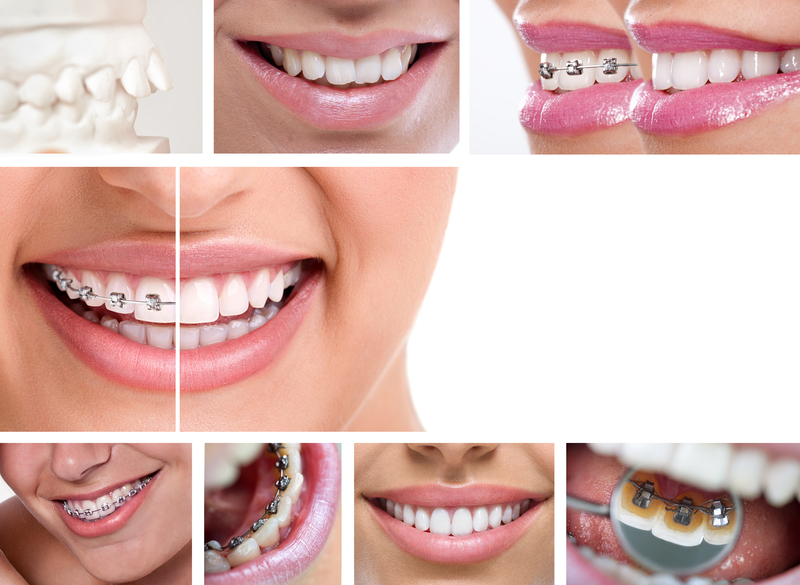
Orthodontic options for the world at large are diverse and exciting. Patients can choose from retainers to clear aligners to invisible, metal, ceramic and micro braces. Each orthodontic option has their advantages and disadvantages. Orthodontists have the specialized knowledge to council you on all your orthodontic options. Their recommendations are based on variables like your age, possible jaw imbalances, differences in the size of your teeth, your personal preferences and more. Orthodontists are trained to know what to use and when to use it, and will work with you to make the best decision.
How Orthodontics Can Benefit You
Many people know that it’s important to have a dentist. However, it’s also very important that you have an orthodontist as well. You can brush and floss your teeth several times a day, but still remain at risk for tooth decay. Teeth that are crooked are teeth that can trap food particles much easier than straight teeth. They are also harder to clean, meaning that that food can stay trapped and lead to tooth decay. If you invest in one of our many orthodontic options, we can straighten your teeth and reduce your risk for decay.
Straightening your teeth can also lead to higher self-esteem and confidence, as has been proven in many studies. Even children benefit from more confidence around peers and friends when they have straight teeth. At Belmar Orthodontics, we see children starting at age 7 and up through adulthood. We provide our patients many orthodontic options so that they can choose how they want to straighten their teeth and how they want to look while doing so. Our orthodontic options include traditional metal braces, ceramic braces, lingual braces and Invisalign treatment.

Traditional Metal Braces
When you think of braces, you probably think of traditional metal braces. These are our most popular orthodontic options available to patients, and the option chosen most often. These braces consist of a metal bracket that is attached to the center of each tooth that holds a metal archwire in place. Metal braces have proven themselves as one of the best ways to straighten your teeth, and are the most economic options our patients have. It is also the option used to correct bite and alignment problems, especially in children.
They are the same size and shape as metal braces and work the same way. However, ceramic braces are made out of ceramic material. Ceramic material is naturally white and will blend in with the color of your teeth. This makes them very hard to notice as compared to traditional metal braces. Another benefit of ceramic braces is that the ceramic material decreases your chances of demineralization, which can happen to some patients who wear metal braces.
Patients of all ages can wear metal braces. Kids love our ceramic clear braces and the ability to dress them up with colorful, bright bands of their choosing. Adults love them because they stay more hidden than traditional metal braces do. However, if you are looking for the sturdiness of brackets but don’t want them to be noticeable, consider investing your time in lingual braces.
Lingual Braces
You may know these braces by the names “nano braces” or “micro braces”. These are simply other names to describe these “incognito” braces. They are metal braces just like you would find traditionally worn by millions. However, the metal is permanently attached to the back of the teeth with dental cement along with the archwire. These braces are invisible when you smile, allowing you to share your beautiful smile with confidence during your treatment. They work similarly to Invisalign transparent aligners. However, you won’t have aligners that you are always removing.
Lingual braces are not right for every patient. Patients who have a deep vertical overbite won’t be able to fit these braces behind their teeth. Adults who have normal-sized teeth are the best candidates. It’s that teeth size that makes it one of our orthodontic options not available to children.
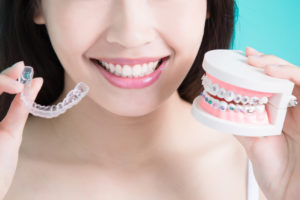
Invisalign
Many adults and teenagers are self-conscious about their appearance, especially when it comes to their smiles. Many view braces as something that children receive, not adults. However, you may be surprised to find that about 25% of people wearing braces are adults and only about 25% of braces wearers are actually children. That means that the majority of braces wearers are teens and adults. We know that adults need to look professional and exude confidence so that they can excel socially, professionally and emotionally. Luckily, we live in a day and age where you can straighten your teeth without others ever knowing.
One of the most inconspicuous ways you can straighten your teeth is through Invisalign treatment. This is a series of transparent aligners custom-made for you. You will switch out these aligners for new ones every 1-2 weeks so that your teeth slowly move into place. Invisalign treatment is the best out of all your orthodontic options that allows you the most freedom with your oral health. You can remove the aligners for eating, drinking, playing sports and for cleaning your teeth as you normally do. This option is not always available for children, but is available for teenagers and adults who are less likely to lose them.
Know Your Orthodontic Options
Orthodontics is a major investment in your oral health and in your life. Having a straighter smile can give you confidence and self esteem you didn’t previously have. Studies show that a better smile can help land you a job easier than those who have crooked teeth. As one of the most-noticed physical features you have, you want to invest your time in straightening your teeth. To find out more about our orthodontic options, call Belmar Orthodontics today at (303) 225-9016 and straighten your teeth today!

